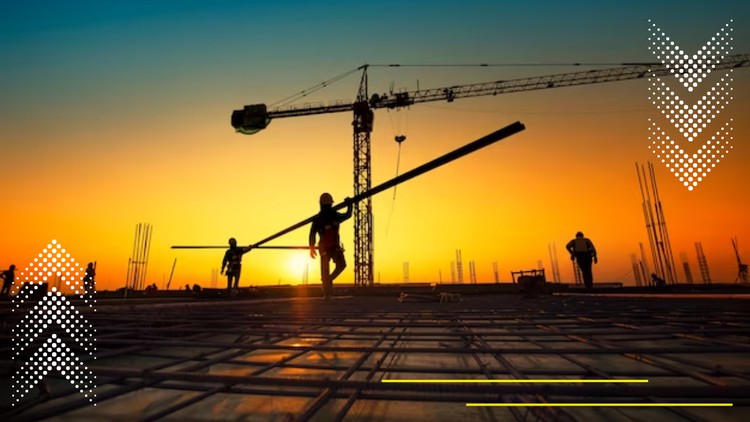
Workplace Health and Safety Management Course For Managers, Engineers & Employees.
What you will learn
What is health and safety at workplace and it’s importance.
How to manage critical risks, risk assessment, internal & external audits.
How to safely manage key construction activities like excavation, scaffolding, installation and cranes work
HSE officer responsibilities and incident investigation procedure
Learn about common accidents, illnesses and injuries that can occur in the workplace and how to prevent or control them.
Description
Work Place and Construction sites are dangerous and there is a real potential risk of members of the public and workers being killed during project delivery. In order to complete a project, we must use cranes to lift heavy loads, dig deep holes and use dangerous energy. As construction managers, it is our ethical responsibility to ensure the safety of our personnel. We must ensure workers and the public get home safely every day.
The only way to do this is to manage key risks and ensure that appropriate controls are in place. This is the essence of construction safety management. We need to determine what risks we face and then make sure they are managed so that business can be carried out safely.
The development of a health and safety culture within an organization inevitably begins with the establishment of an appropriate Health and Safety Management System. An effective health and safety management system gives employers peace of mind that their employees are working in a safe environment and in a safe manner.
With this Workplace Health and Safety Management Course, you will discover in detail the terms, definitions, clauses, sections, and all required formalities related to HSE [Health and Safety Environment] according to International Standards. The course consists of total 7- Lectures with helpful study materials.
Lecture 1
What is Safety?
Accident, how to prevent from accidents at construction
What is Injury, common types of Injuries at Workplace
What is Hazard? different types of Hazards, Biological, Physical, Ergonomic, Psychosocial Hazards
Lecture 2
What is Risk and incident? Types of Incidents.
What is Safety Policy? Safety Policy Principles.
Safety Audit? Steps of successful Safety Audit.
Safety Tags, Safety Program, Emergency Planning and Work Permit System and Types.
Confined Spaces their Examples, Characteristics & Types.
Lecture 3
What is Excavation and Methods of Excavation?
What is Welding? ARC, MIG & TIG Welding?
What is Sand Blasting, LEL& UEL and PPE’s?
Lecture 4
Role of Safety Officer, how do we carry out Risk Assessments?
Key parts of Health & Safety Management System?
Safety Signs
Lecture 5
How do accidents and incidents happen?
How to investigation carry out?
Who carries out investigation?
Types of Investigation Process
Internal and External Auditing
Types of Evidence?
Lecture 6
Fire protection at workplace?
Types of Fire, Fire Safety Systems and Testing and Inspection
Lecture 7
Ways to avoid being struck by falling or flying objects at construction.
Lockout and Tagout Procedures
Use of explosives at workplace
Transportation, Misfires and Storage of Explosives.
Content